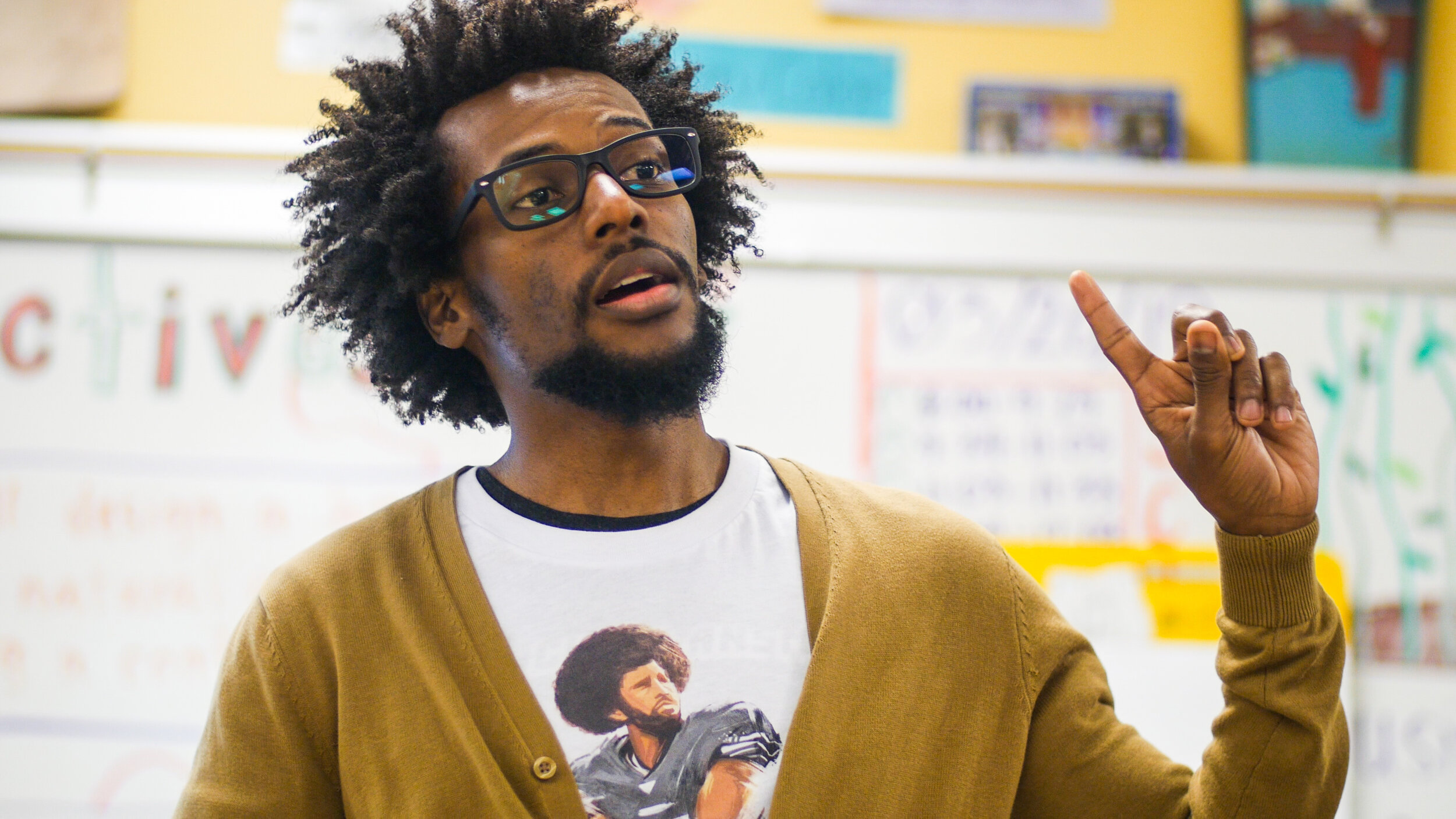This is how digital painter Nikkolas Smith turns grief into art and activism that goes viral.
I’ll never forget driving by the teddy bear.
It was two miles from where I lived. Where Trayvon Martin was last alive, walking with Skittles from the Sanford, FL 7-11 I got that bottle of water from that one time.
There were piles of flowers and cards, near the grass his shoes last touched, still growing.
There were piles of stuffed animals too. Reminders that this was just a kid.
A kid.
He should have been in school today. He should have been unfurling a day-old Skittles bag to finish whatever colors were left.
I kept driving, but I did not know where to go from here.
On the other side of the country, Nikkolas Smith was grieving with a friend, pondering, “What if the great leaders throughout time were here today, seeing what was going on? What would they do? What if they wore hoodies? A young Black kid wearing a hoodie shouldn’t be a death sentence. This kid could have been the next Martin Luther King or some great leader. We don’t know. It is a tragedy that we can never know.”
Pierced by that tragedy, Nikkolas turned to Photoshop.
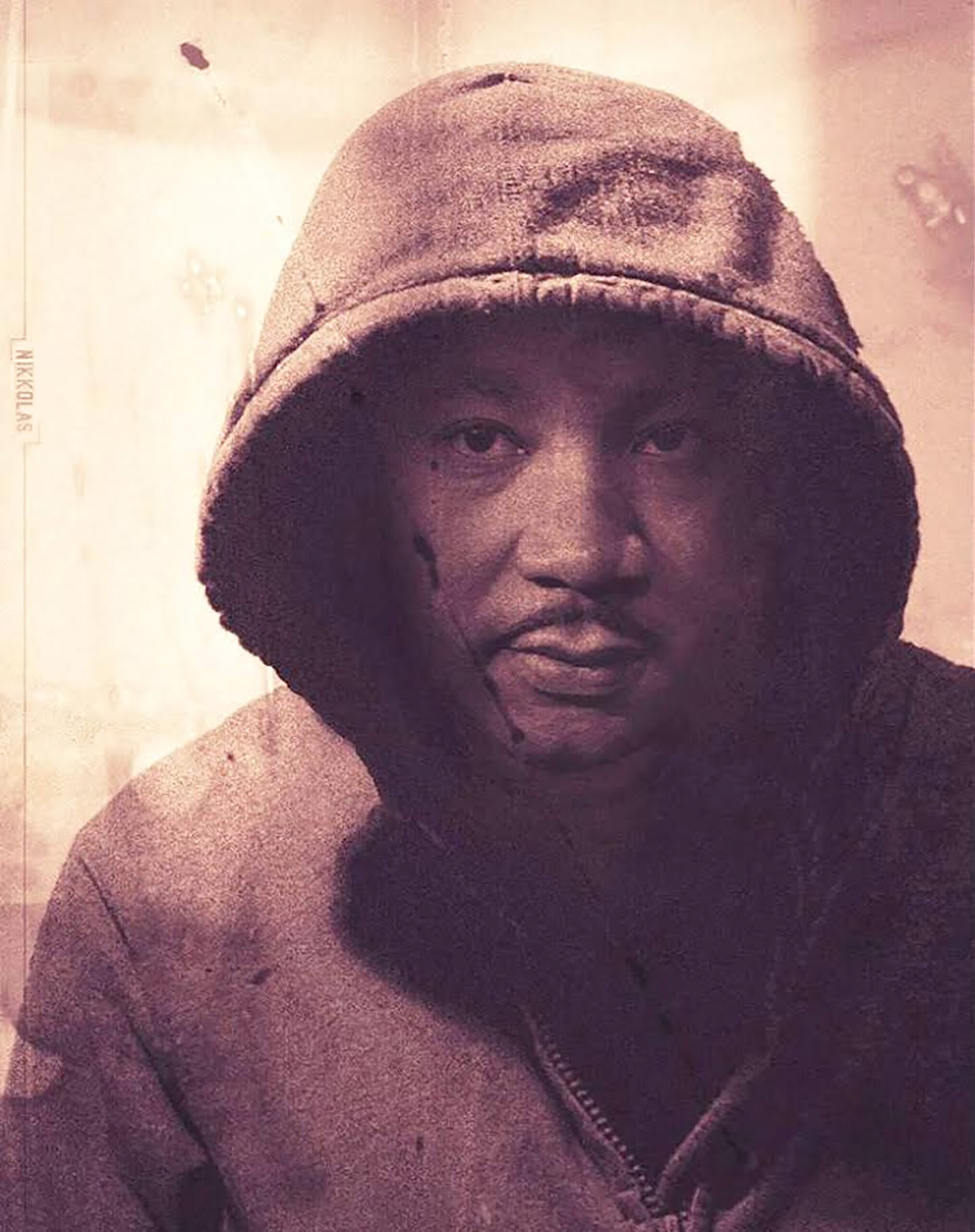
“It was just a statement,” he says, “to say maybe we should not be judging people by their outward appearance but by ‘the content of their character.’”
Nikkolas shared the work online and went to work the next day as an Imagineer for Disney Parks. He was actually at Disneyland when he got a text from his friend that he never expected:
“Your art is on CNN.”
CNN host Van Jones had retweeted Nikkolas’ piece and it went viral.
It did more than just “speak louder than words,” as the saying goes. It spoke the things words couldn’t yet hold. It spoke on behalf of those drowning in the pain, wondering if they would ever matter in the way they deserved.
CNN asked Nikkolas to come on the show, and a few days later he was on national television, talking with Dr. King’s niece.
He also got a lot of hate mail.
Some didn’t initially recognize that the man beneath the hood was Dr. Martin Luther King Jr. – and they got angry when they did. They felt “tricked” into judging him.
The piece itself almost became a kind of experiential installation, or like one of those illusions – is the dress blue or gold? How you saw it might tell you something about yourself.
And some people did not like what they saw.
But the work was not meant to place blame on the viewer’s instantaneous reaction, but to remind them that a space exists between seeing and reacting – a space that’s been damaged and must be fixed. Lives are being lost in that space.
Nikkolas’ art is created in the space between grief and hope, pain and progress, rage and change.
It’s a raging rainbow; a collective, guttural scream – like the kind I let out alone in my car the first time someone I loved died – coupled with how I felt the first time I saw a full rainbow from end to end, a perfect half-circle touching opposite sides of the earth, every color vibrant, and all the neighbors coming outside to see, talking to each other for the first time, saying hi and smiling.
That juxtaposition in his work has captured the nation, speaking to those who long for the dream that has yet to be, striving against all the ways it’s falling short, but believing that there is hope, and that the value of a nation is in its people – in their collective dreams and potential and inherent, gorgeous, incomprehensible worth.
“It’s an artist’s duty to reflect the times.”
I sit down across from Nikkolas who’s wearing khaki pants and a navy flowered collared button-down shirt, looking at me earnestly through cool dark frames. His LA home is serene, calm – a seeming oxymoron after just coming from the bustling union station and a long Uber ride through Koreatown.
But now I’m here and the sun reflects off the framed photos that wouldn’t exist on Nikkolas’ walls if it were up to him – his wife was the one who wanted to display his art.
So above us Colin Kaepernick kneels. The Obamas stand proudly in Incredibles gear, next to a thank you letter the former President wrote to Nikkolas. There’s also an NAACP Image award nomination and the movie poster Nikkolas designed for Dear White People. And Lupita N’yongo, Chadwick Boseman, and the rest of the Black Panther cast stare at us from a poster above, like royalty.
The painting that hangs highest, though, sits sturdily above the bookshelf on its own wall, a rainbow-stroked image of the Dr. Martin Luther King Jr. piece that CNN picked up.
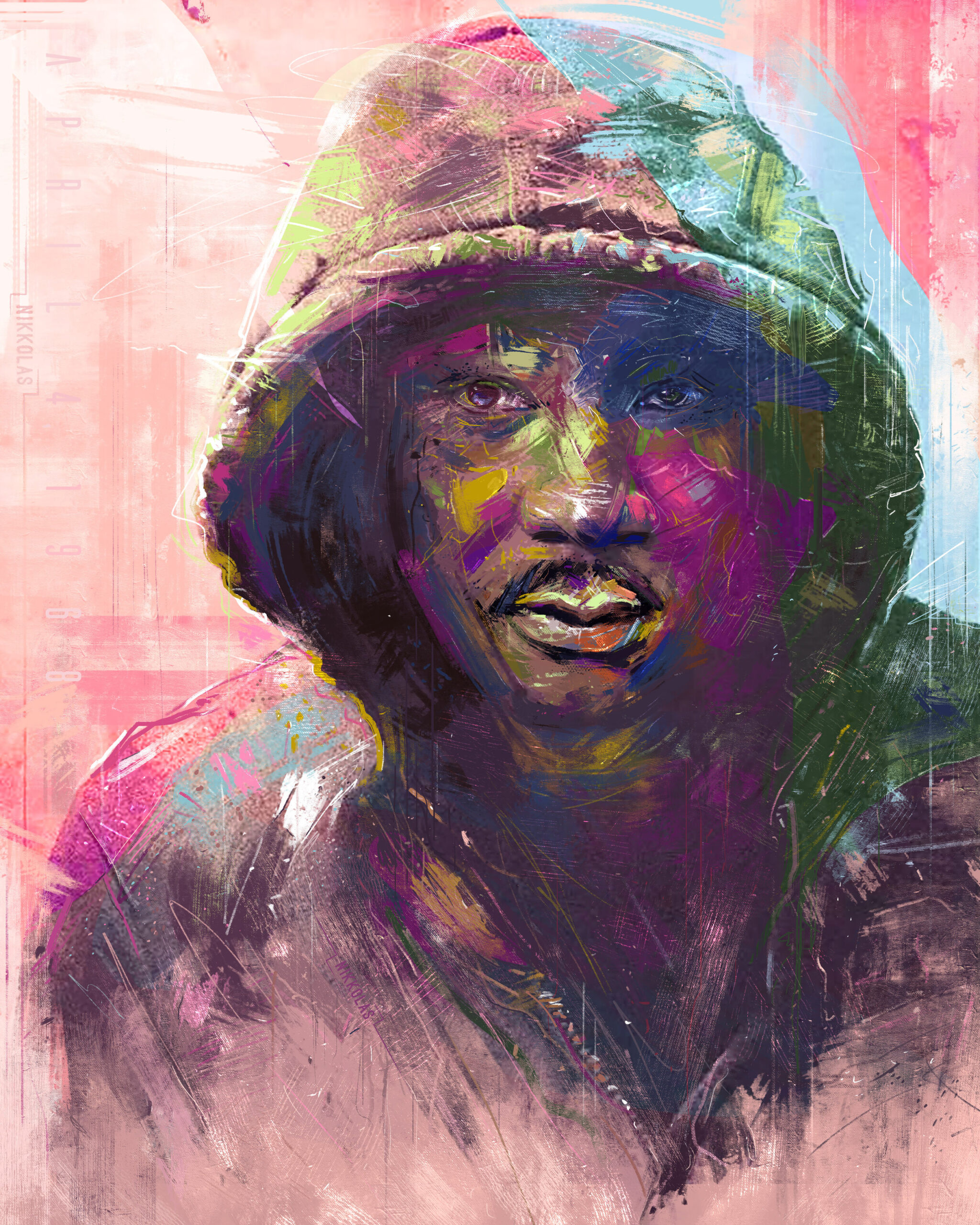
When Nikkolas tells me how Nina Simone inspires him, quoting her – “It’s an artist’s duty to reflect the times” – he says the word “duty” with a sense of joy and privilege. Art can feel peripheral in brutal times. Pointless. (Sometimes I think about never writing again and learning carpentry or how to install HVAC units.) Dreams feel superfluous in suffering.
Why bother?
Nikkolas bothers because the times beckon expression. (“Impression without expression equals depression,” a quote I read once in the book Brain Storm and never forgot.)
He also bothers because Nina Simone said so. Because while artistry can feel pointless or self-involved on an artist’s worst days, Nina reminds us that the artist is useful. The artist does have a job to do. And it matters.
The only question left to answer, once the art has claimed its worth, is one Nikkolas struggled with too: Could I ever be good enough to create art that matters?
“It doesn’t have to be perfect.”
Nikkolas first felt the spark of wanting to be an artist when he saw hundreds of kids at his Texas high school wearing T-shirts he designed, featuring their mascot, a bearkat – “I don’t even know what a bearkat is,” he remembers as we both laugh and think about googling it later.
It was the first time something he created went “viral,” in a way, and the experience of having people genuinely enjoy something he made, enough to make it a part of their own lives and identity, was electrifying.
In college he started doing political cartooning, paying close attention to the country’s narrative and channeling it into art. But though he loved it, he still only thought of art as a hobby – he didn’t know anyone who did it professionally.
Math seemed more practical when it came to making money, and since he was good at it along with having an eye for design, he chose architecture for his career and got a Master’s degree at Hampton University in Virginia. His career plan? “I’ll graduate with a Master of Architecture and go back to start a firm in Texas. Because what would you do besides go back to Texas after leaving Texas?” He never saw a life beyond that.
But before he graduated from his Master’s program, a Disney Imagineering competition came to his school and changed everything.
His dreams started to expand. He saw people doing art as a career in ways he’d never been exposed to before. He applied for and got an internship at Disney and followed a gut-feeling he had as soon as he arrived at the offices in Burbank: “I’m not leaving this place.” Determined, he worked hard at his internship and turned it into a full-time job.
In addition to architecture-related projects, he also did concept art for Disney, designing things that people see every day in places like Orlando and Shanghai. (I find out that the embedded shells and starfish I’ve always loved and pointed out while waiting in the line for The Little Mermaid ride in Orlando were designed by Nikkolas.)
And it was Disney that introduced him to digital painting; they offered Photoshop digital painting classes after work. He went to a class and made his first piece, a sailboat on some waves, and he was hooked. He started practicing 10 hours a week after work and on the weekends.
The nature of digital painting also unlocked a kind of artistic productivity Nikkolas had never known. “I wasn’t the type of artist that had tons of sketchbooks. I had this fear of not being perfect and so I didn’t sketch a lot. I really didn’t. Because sometimes it would just suck. It wouldn’t look right, like I wanted it to.”
But in Photoshop, there was an “undo” button. It allowed for a new mantra, giving his artistic sensibility real wings: “It doesn’t have to be perfect.”
“Man, I don’t feel like doing anything but just being sad.”
After five years of Imagineering during the day and painting at night, Nikkolas felt a pull – a simple one that all artists feel at one point in their lives. Almost like a calling, though the direction is rarely clear. For Nikkolas, it sounded like this: “I need to create more art.”
He talked to a friend about this mysterious pull – he was already creating lots of art, what more could he do? Where was this coming from? His friend, like most good friends, could see what Nikkolas couldn’t. He thought it was time for Nikkolas to start creating art that he was really passionate about and start sharing it with other people. It was time to step out of practice-mode and into the public eye.
Nikkolas didn’t have a ton of free time to make more art than he already was, so he had an idea: spend five minutes to five hours every Sunday and make art and post it on Instagram.

Every Sunday he shared a new piece, creating them quickly with Photoshop, using a custom brush he created that mimics charcoal.
And the time-limit helped his perfectionism; he didn’t have time to work on it for days. He needed to create and post it the same day. The only goal he gave himself was “make it look good enough to where you won’t be embarrassed if you post this on social media.”
The rhythm worked, and it helped him create more art, which he did every week for five years, no matter what. His new guiding phrase? “Even if I feel like it looks weird, just keep going.”
He started sharing his work with his few hundred Instagram followers. Not much happened.
He created art every Sunday, shared it, then went to work on Monday.
For years. That was it.
That was enough.
Then one Sunday night Lupita N’yongo won an Oscar. Nikkolas, inspired, posted a quick charcoal sketch. People were floored he had created something so fast and so relevant. It went viral.
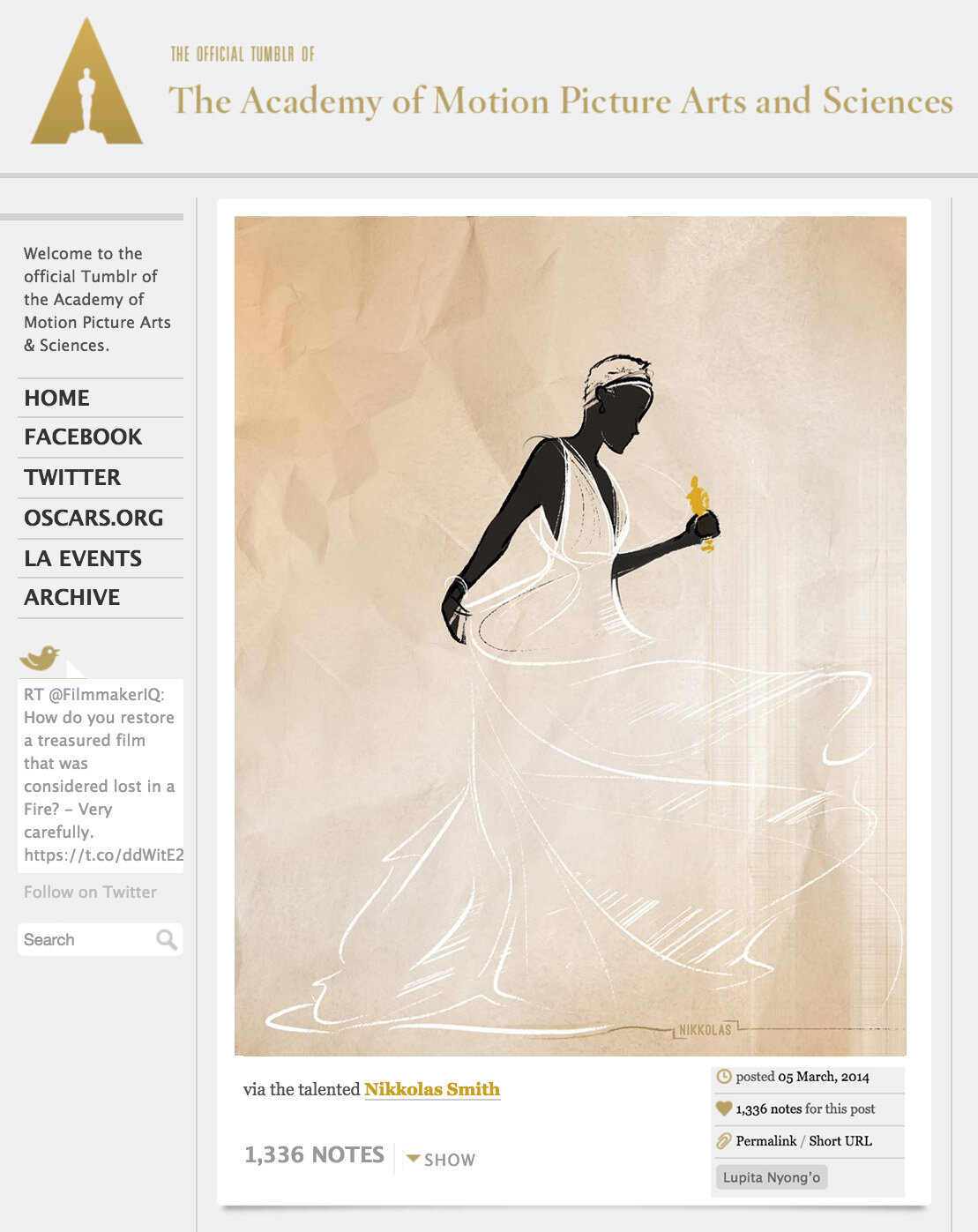
His following started to grow with every share, with every new piece. He started to realize that people really responded when he created art that synced with the times.
When Maya Angelou died, Nikkolas didn’t create anything, and he was inundated with requests from his followers – they all wanted to know, Where was his portrait? Where was his tribute? They wanted it. They needed it.
It was almost a demanding, and it was the first time Nikkolas understood what his art was doing for people. It had become a way for people to collectively grieve, remember, protest, and celebrate. They had started to rely on him for that.
But Nikkolas never created current event pieces as a way to go viral, grow an audience, and that’s precisely why they work. They come from a very deep place in his heart, the place where he’s processing those very events. He’s not telling the world what to think, what to feel. He’s showing what’s going on inside of him, how he’s thinking and feeling as things are happening, in real time.
And that’s why he didn’t have a piece for Maya Angelou the day she died. Because he was still grieving. He wasn’t ready.
He tells me there are many moments like that, when he feels, “Man, I don’t feel like doing anything but just being sad.”
Like during the weekend after the fourth of July in 2016. “There were two Black men who were murdered on a specific weekend. The first was Alton Sterling. There was so much anger and hurt and pain. I was too hurt to do anything.”
And then, Philando Castile. “He was shot right there with his wife in the passenger seat, his kid in the back seat.”
That was the straw that broke the artists back. It took him from the place of deep grief to an overloaded state of “Okay, now I can’t not do something.”

People wrote to Nikkolas saying things like “I needed to see that. Your art really helped me process this traumatic time.” His work helps people feel less alone – especially valuable when we learn about these events in isolation, on a phone. And sharing the art gives people a way to communicate their own grief when they have no words.
“It’s painting a world that you want to see.”
Nikkolas’ art helped me grieve. It’s how I found him. And somehow in this sunlit room, surrounded by our heroes, I find myself talking about the teddy bear for the first time. I’d never had the words before. Never felt like they were even mine to say.
What I found in Nikkolas’ work was a kind of collectiveness, a call, a plea, and most of all, a We.
How could We let this happen? And We have to do something to make it stop.
Nikkolas’ work calls us all to consider, what if every story doesn’t have to end this way? What if it doesn’t have to be this way forever? What if it could get better? What else will we lose if it doesn’t?
I ask Nikkolas where his hope comes from, how he’s able to maintain even an ounce of it, especially in the moments when these horrors are happening.
“My parents are licensed ministers,” he says, “so growing up, there was always this thing instilled in me that it’s going to get better or there is a brighter day coming. This feeling of optimism and hope, it’s just there. There’s so much despair a lot of times in the Black community, that you have to hold on to some sort of hope that things will get better.
“That’s one of the things I love about concept art. It’s painting a world that you want to see, so that others can at least get a glimpse of what it would look like.”
Nikkolas was one of the first people to ever see a glimpse of Warrior Falls during the filming of Black Panther. He walked onto the set one day to do some research for his work for Disney and saw the huge rock wall over a green screen, people standing on the rocks and in boats, arrayed in gorgeous tribal costumes a’la Ruth Carter.
Nate Moore, “one of the coolest people ever,” and the executive producer of Black Panther, approached Nikkolas as the film was about to wrap and asked him to create something: “We have this idea to maybe create a special poster for the cast and crew as a wrap gift.”

I turn to the poster now displayed on Nikkolas’ wall to my right and say what we’re both thinking: “So Lupita has your art in her house right now?” We both laugh. We don’t need words. If our friendship was not founded on art it would have eventually been founded on our exacting, deep love for Lupita.
Nikkolas also created the movie poster for Dear White People – it was the first time his mom was able to see his art displayed in his hometown of Houston, Texas, at the movie theater.
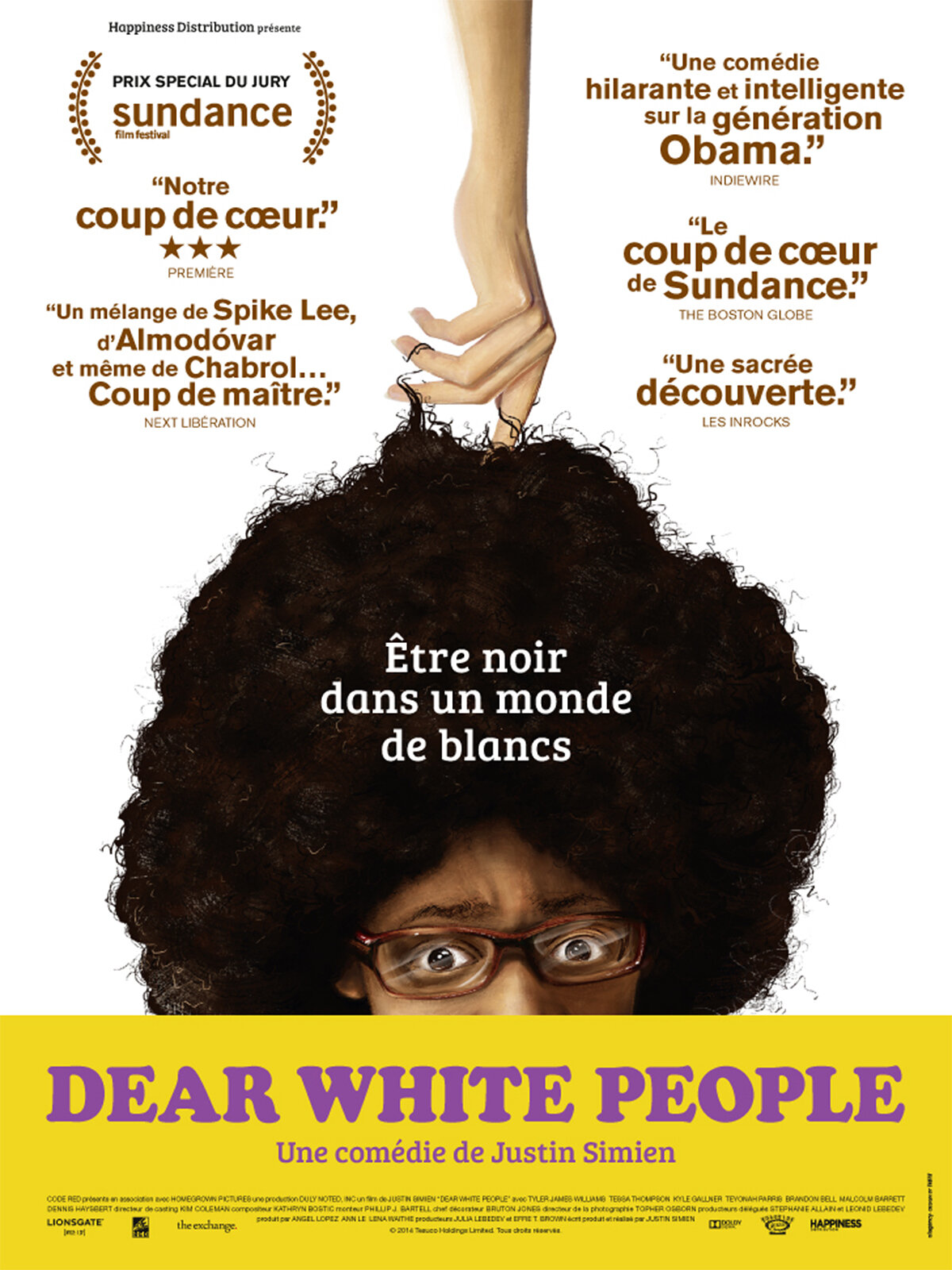
But eventually, the movie poster came down, and Nikkolas remembered what his mom would always say: “Books are forever. When you’re gone, the books will be there.” He thought about making a book one day.
Despite his art being in movie theaters across the country and in Lupita’s house, he still didn’t feel like a professional artist. All of that was on his own time, nights and weekends stuff. It still wasn’t paying the bills.
“Don’t shy away from the controversial topics.”
When Nikkolas thought about what kind of professional artist he’d really like to be, he kept seeing children’s books. And he’d learned from years of doing art that the best thing you can do is hire yourself, create the thing you’re dreaming of, even before you have any promise of publication or it going anywhere beyond your own Instagram account.
So when Simone Biles won the gold medal, along with many other inspiring women in the 2016 Olympics, he posted a new piece in the style of a children’s book cover with the caption, “Does anyone know of a child who might like to read this picture book??”

A lot of people did. It went crazy viral.
So viral, in fact, that it came to the attention of someone at Skyhorse Publishing in New York. They reached out to Nikkolas saying, “We love the artwork. Can you turn it into a book?” The only thing crazier was the fact that they wanted to know if he could make the book in three weeks. He said yes.
Within a few months, his first book was on the shelves of Barnes & Nobles across the country.

Despite everything that came before, the dream-come-true of seeing his art on a book on a shelf was the first moment Nikkolas really felt like a professional artist.
Nikkolas left his job at Disney after 11 wonderful years and is now working on his own art full time, including more children’s book projects (like the one featuring the women of the world cup), being a traveling live artist for Hans Zimmer on tour, and using his artistic skills to help directors communicate their vision to the studios, developing concept art for some very exciting top-secret films that he can’t quite tell me about now but does tell me, with a glimmer in his eye, that they’re going to be awesome. It’s just one more way he’s making visuals for a dream, helping others see what can be.
And he still continues sharing his personal art on Instagram, reacting, grieving, celebrating.

In other words – he’s still doing his job. His duty.
“Don’t shy away from the controversial topics,” Nikkolas shares when I ask what advice he has for other artists. “The more jarring it is when you think about it and the more frustrating it is, the more you probably need to create art on that topic.”
*
Learn more about Nikkolas and his art here.
The Little Book of Big Dreams is filled with true stories of dreamers who decided to try for their biggest dreams and kept going when things got hard (which they almost always do).
The dreamers in this book include Oscar winner Kristen Anderson-Lopez, Disney producer Don Hahn, Pensole Lewis College founder D’Wayne Edwards, Hamilton cast member Seth Stewart, Black Girls Code founder Kimberly Bryant, and more.
But the most important story in this book is yours.
The Little Book of Big Dreams: True Stories about People Who Followed a Spark
ORDER THE LITTLE BOOK OF BIG DREAMS
SPARK YOUR NEXT DREAM
© Chronicle | Legal | Site Credit |
